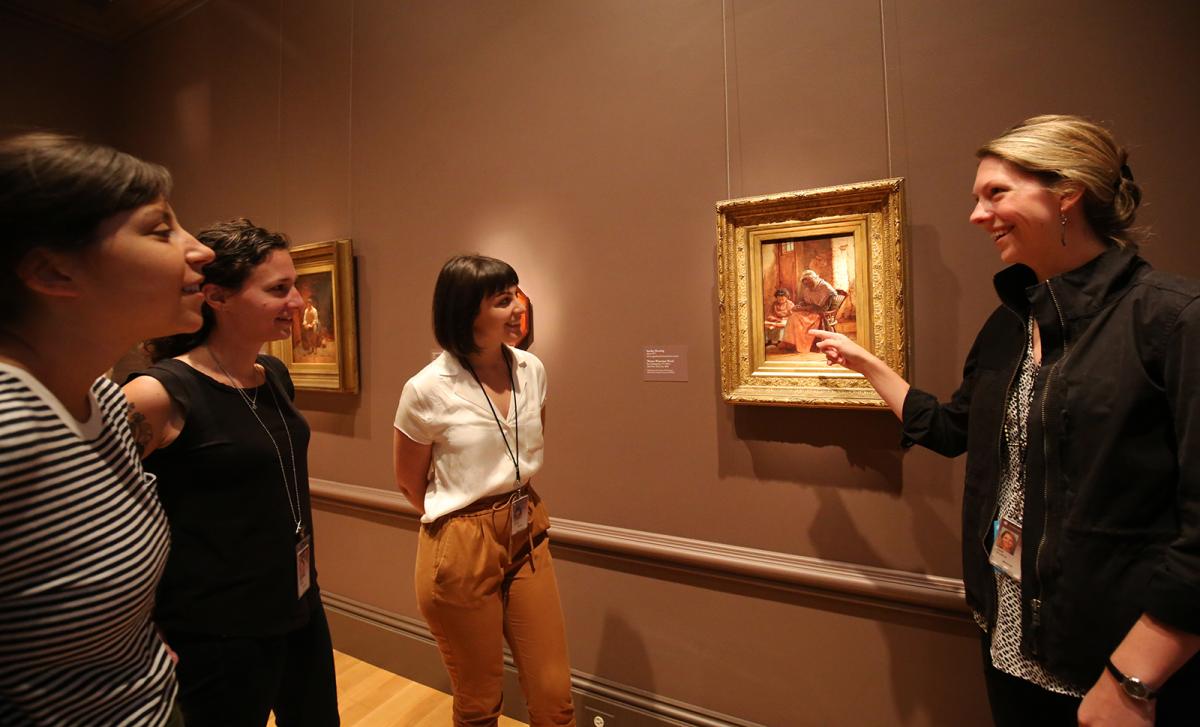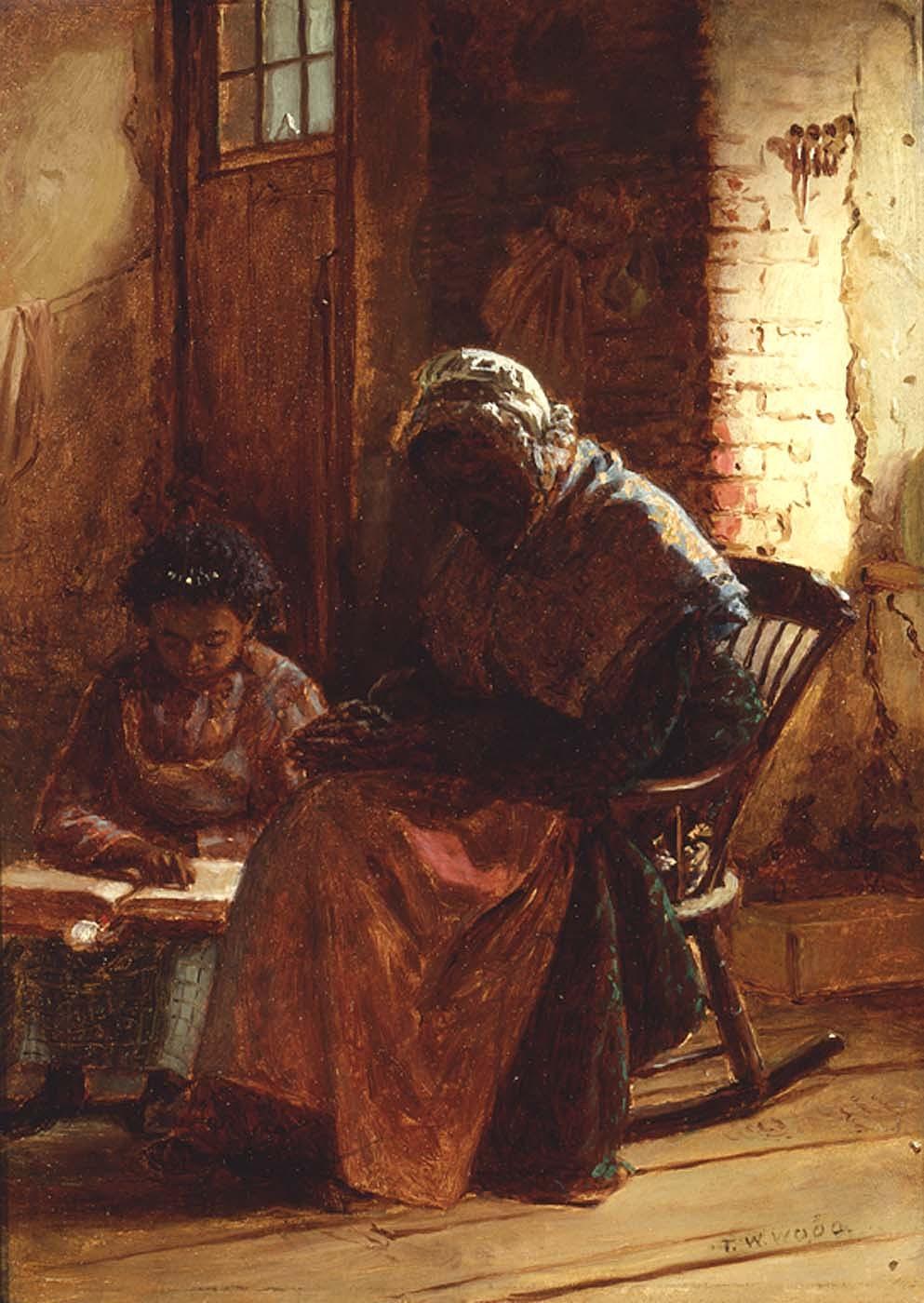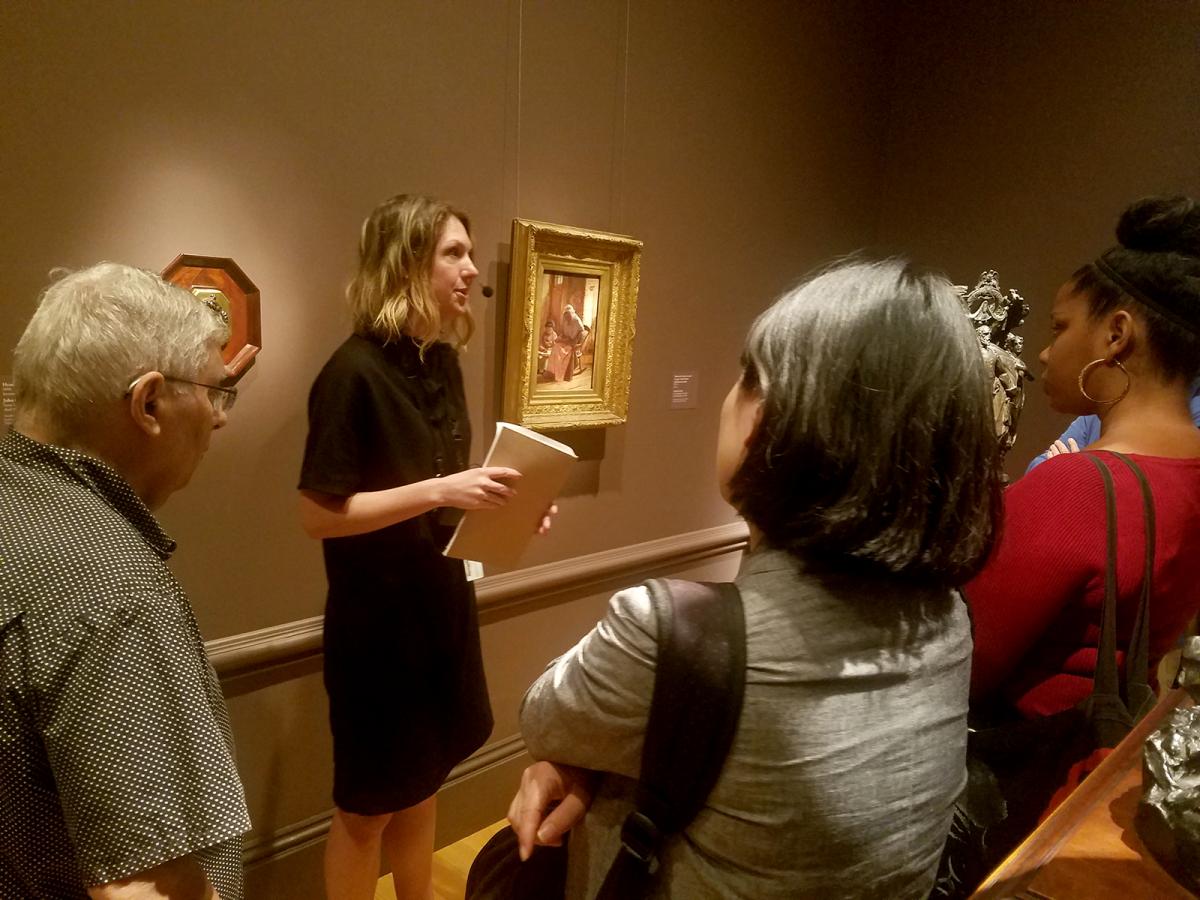
Jill Vaum is the Patricia and Phillip Frost Predoctoral Fellow for 2018–2019 at the Smithsonian Museum of American Art. She is a PhD candidate in the History of Art Department at the University of Pennsylvania, where she is writing the dissertation: “Facing Freedom: Tracing African American Emancipation in Antebellum Portraiture.” One chapter of Vaum’s study focuses on the pre-Civil War paintings of Wood, exploring freedom’s visible expression within different urban settings.This blog post is based on a talk Vaum gave at SAAM as part of the Art Bites series.
An elderly woman bows her head, closes her eyes, and presses her hands together, praying quietly as she listens to the young woman beside her read scripture aloud. The girl moves through the text cautiously, her finger tracing her place on the page, her eyes affixed to the task at hand. This scene of private devotion, possibly between a grandmother and granddaughter, appears within a rustic interior space. A clothesline intervenes into the earth-toned room to suggest a small dwelling, perhaps a cabin. Details, like the chimney’s brick surface and the central figure’s red apron are rendered with loose, suggestive brushwork. Similarly undefined are the location of this home and the identities of the women depicted.
In Sunday Morning, Thomas Waterman Wood (1823–1903) created an image that spoke to the different generational experiences of life after emancipation. The advanced age of the central figure, a woman of African descent, and the painting’s date (ca. 1877), implies that she was born into slavery without the legal right or opportunity to read or worship freely. The sparse environment—evocative of slaves’ quarters to viewers steeped in the visual culture of Harriet Beecher Stowe's anti-slavery novel, Uncle Tom's Cabin (1852)—further signals the woman’s prior enslavement and implies the setting of a Southern landscape. Her young companion, also of African descent, was more likely born after the abolition of slavery, initiated with the Emancipation Proclamation in 1863 and solidified nation-wide with the Thirteenth Amendment of 1865. Her literacy evokes the advanced educational possibilities for African Americans, especially children, through Reconstruction-era initiatives.
SAAM’s painting was likely a preparatory oil sketch for a different version of Sunday Morning (now at the Detroit Institute of Arts) that Wood exhibited at the National Academy of Design’s 1877 Annual Exhibition in New York.1 The painting went on display shortly after a contentious presidential election between Rutherford B. Hayes and Samuel J. Tilden. Hayes’ victory was only secured when he agreed to cease federal intervention into Southern state politics, effectively ending Reconstruction and the infrastructure to protect free blacks’ rights created during this period.
To regular Academy exhibition attendees, Wood’s submission was a familiar extension of his other studies of African Americans subjects. These paintings addressed multiple facets of free black life, such as escaping enslavement, the right to vote, military service, and urban labor. This audience would have also been aware of the native Vermonter’s annual trips home to Montpelier from his studio in New York, and his propensity to feature Vermont residents in his genre paintings. In its “Fine Arts” section of June 9, 1876, The Evening Post reported that the artist would “pass the summer sketching in the neighborhood of Montpelier.” On October 12th, the paper alerted its readers that Wood had come through New York for a week, “but has again returned to his country home.” Wood's “characters,” the author states, “as well as the accessory studies are more conveniently obtained in the country.”2
In Wood’s account books, microfilmed at the Archives of American Art, he records paying “Mrs. Hazard, 99 years old” fifty cents to model for him on October 24, 1876, suggesting she may be the elderly figure seen in Sunday Morning.3 Phebe Hazzard, 93, appears in the 1870 Washington County Census Records and was likely the model for this painting.4 Hazzard was born in Massachusetts, a state in which slavery had been illegal since early 1780, meaning she had never been enslaved. She lived with Herman and Mary A. Mosley, a middle-aged black couple, in Berlin, Vermont. Hazzard and the Mosleys were a part of a small black population in Washington County—34 people out of 3,219 total residents in 1880.5 These individuals worked as farm laborers and owners, barbers, cooks, and domestic servants; some served in the Union army; and many lived their whole lives in Vermont or other free states.
What changes in our reading of this painting when we no longer understand it to be a scene of life after enslavement in the South, but rather a depiction of an established free black community in New England? Genre paintings like Sunday Morning evoke broad social and political issues of the time in which they were made, and can prompt us as contemporary viewers to learn more about their historic context. They can also be an invitation to research the individuals that bring their stories to life. Wood’s itinerant career, which included time in Baltimore, Washington, Nashville, and Louisville before he settled in New York, leaves a visual trace of African American lives from each city. Though they often feature generalized settings and unidentified characters, his paintings open avenues of inquiry into the specific people who appear in them and the role of place in their experience of freedom.
# # #
1. Lesley Carol Wright identified the dual mention of Sunday Morning in Wood’s account books and realized the version of the composition at SAAM was different than that shown at the Academy. See her discussion of Wood in “Men Making Meaning in Nineteenth-Century American Genre Painting, 1860–1900,” PhD Dissertation (Palo Alto: Stanford University, 1993), especially note 33, p. 82–3.
2. The Evening Post, New York, June 9, 1876, and October 12, 1876. These clippings and numerous others about Wood can be found in the Colonel Merl M. Moore, Jr. Files at the Smithsonian American Art and Portrait Gallery Library.
3. Account book entry on October 24, 1876, Frame 0647, Reel 2810, “Thomas Waterman Wood papers and art gallery records 1845–1979,” Archives of America Art, Washington, DC. The dates surrounding this notation are missing from the microfilm; though, based on his typical use of models, Mrs. Hazzard would have sat with Wood for several days. A mention about the young model, and possible clues to her identity, are likely in pages of these missing dates.
4. 1870 United States Federal Census, Berlin, Washington, Vermont, National Archives and Records Administration Microfilm Roll M593_1626, Page 41A, accessible at Ancestry.com.
5. Pages related to Vermont population records from the 1880 United States Federal Census have been excerpted by the Vermont Historical Society. [PDF]





















